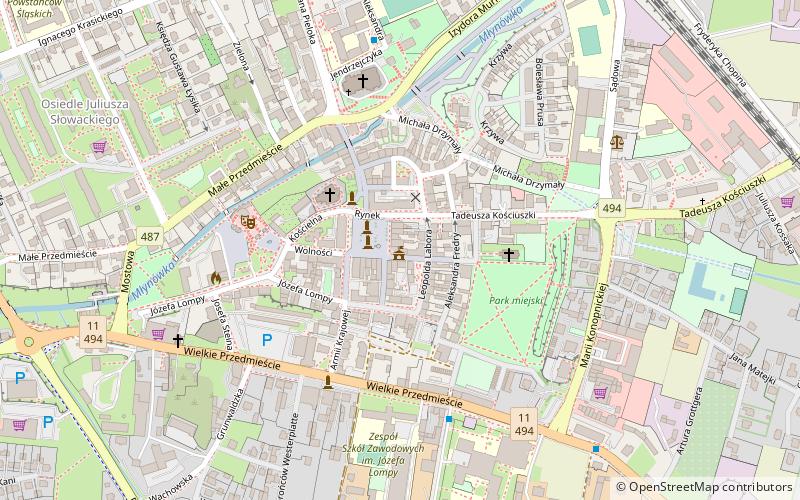Ratusz


Facts and practical information
The Ratusz, or City Hall, stands as a historic emblem in the heart of many Polish cities, with the most notable one being the Ratusz in Poznań. These grand structures, often dating back to the Middle Ages, serve as a testament to Poland's rich history and architectural heritage. As the administrative centers of their respective cities, Ratusze (plural for Ratusz) have been the sites of civic authority, where important decisions have been made and local governance has been conducted.
The Poznań City Hall, for example, is a Renaissance masterpiece located in the Old Market Square. It was originally constructed in the 13th century, but its current form dates back to the mid-16th century when it was redesigned by the Italian architect Giovanni Battista di Quadro. The building is renowned for its ornate façade and the mechanical goats that butt heads at noon, a spectacle that has delighted residents and tourists alike for generations.
Beyond Poznań, many other Polish cities boast their own Ratusze, each with unique architectural features and historical significance. These city halls often feature a mix of Gothic, Renaissance, and Baroque elements, reflecting the periods in which they were either built or refurbished. They commonly include a tower, which historically served both as a lookout and a symbol of municipal power. Today, many of these towers offer panoramic views of their cities and are open to the public.
The Ratusz is more than just a city hall; it is a cultural focal point, often housing museums and galleries that chronicle the city's history and showcase local art. Events, celebrations, and markets frequently take place in the squares that surround these majestic buildings, further cementing their role as the beating heart of urban life.
20 RynekOpole
Ratusz – popular in the area (distance from the attraction)
Nearby attractions include: St. John the Baptist's Church, Kościół odpustowy pw. Św. Anny, Kościół odpustowy pw. św. Rocha, Kościół p.w. św. Marii Magdaleny.






